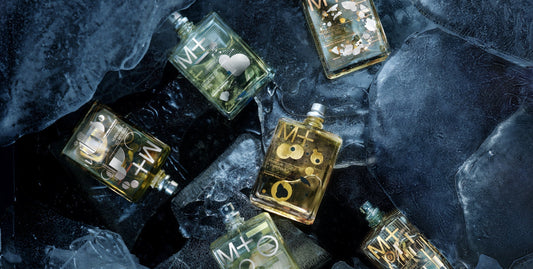– By the nineties, natural sandalwood oil had become unsustainable to harvest and incredibly expensive. The big flavour & fragrance companies were all looking for a new molecule to use instead. It was kind of a sandalwood arms race.
– There were already several good sandalwood molecules out there. At Givaudan we had Sandela, Radjanol and Ebanol, all with slightly different fragrance profiles. IFF had Bacdanol, Sanjinol and Santaliff, Kao had Santal Mysore Core, Symrise had Brahmanol, Sandel 80 and Sandranol, and Firmenich had found a very successful one, Polysantol.
– Then in 1996 someone came up with Javanol and the sandalwood race was pretty much over. Not because the other sandalwoods were superseded. They weren’t. There is room for variations here. But Javanol turned out to be the best fit for the receptors in your nose that code for sandalwood. The more perfectly the sandalwood ‘foot’ fits the receptor’s ‘shoe’, the more intense the smell will be. Javanol proved to be the sandalwood Cinderella the chemists were looking for.
– There are some 400 odorant receptors in the human nose. While there will always be one perfect fit for each receptor, the receptor pockets are broadly tuned to accept a more general shape. Any odour-molecule is always fairly flexible and therefore hops between different receptors. It’s like a maxxed-out version of those toys where kids have to put the square shape in the square hole, the star shape in the star hole, but where the toys are made of rubber so you can squeeze a star-shaped one into a square hole; though it will pop out again pretty fast.
Javanol proved to be the sandalwood Cinderella the chemists were looking for.
– Here comes the science bit. The person who discovered Javanol back in ’96 was Jerzy Bajgrowicz, a chemist working here at Givaudan. One of the things he did was to substitute the double bond in a part of the molecule called the ‘spacer’ with a cyclopropane ring. This three-membered ring maintains the electronic properties and rigidity of the double bond but improves on the hydrophobicity, so making Javanol a near-perfect fit for the sandalwood receptor pockets in the nose.
– The bonds in the ring are bent like bananas, which makes the electrons sort of pop out. This provides electron density, which is important because what the receptor in the nose ‘sees’ is not just the silhouette of the molecule, but its electronic shape. This electronic shape orientates and then binds a molecule in a particular direction, depending on where its electrons are concentrated. It’s similar to a magnet, which has two poles, a positive and a negative. So how well the molecule fits the receptor pocket is down to where the electrons are concentrated, as well as its overall shape.
What the receptor in the nose ‘sees’ is not just the silhouette of the molecule, but its electronic shape.
– Scent is a language, which is just to say that an odorant impression is down to combinatorial coding. When one conformer shape fits into a pocket, a specific type of neuron lights up, linked only to that shape of pocket. You need a combination of different neurons to light up in order to enable your brain to decode a specific smell. Javanol, for example, lights up the neurons coding for sandalwood, but as it is so strong, it saturates these at low concentration, and then less specific neurons are fired, ie. for lactonic notes, rose, lily of the valley and grapefruit.
– Lab-created molecules like Javanol are sandalwood in abstraction if you like. Natural sandalwood oil is of course much more multi-faceted, it has cedary, smoky, burnt, sweaty, milky, creamy, sweet, animalic, nutty and even urinous aspects. Javanol is an abstraction of “santalness”. It has the creamy, warm, milky-rosy and clean aspects of nature’s sandalwood. It is both sexy and transparent. That's rare.
Javanol pendant designed by Philip, who is also a jeweller. He suggests you might like to scent the pendant with Molecule 04. You can find it here.



